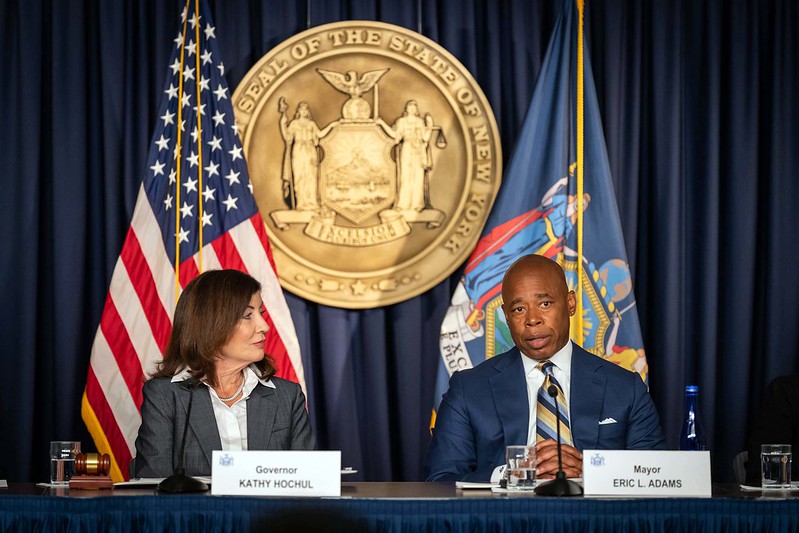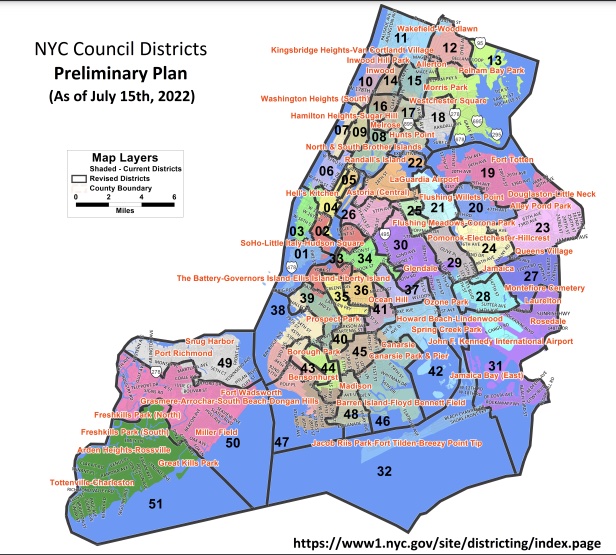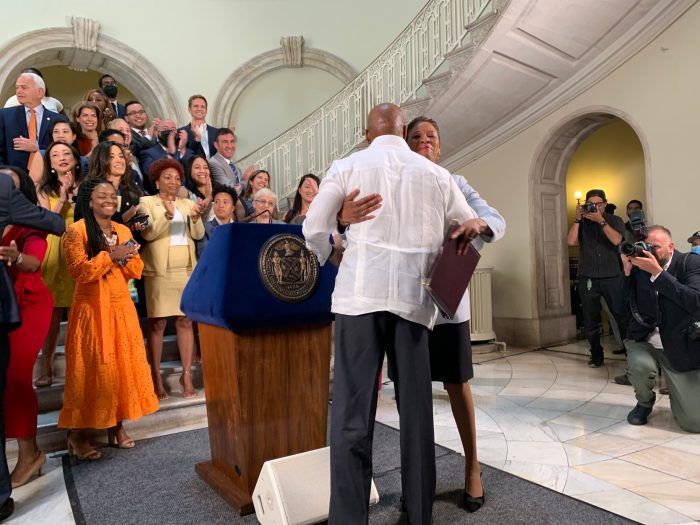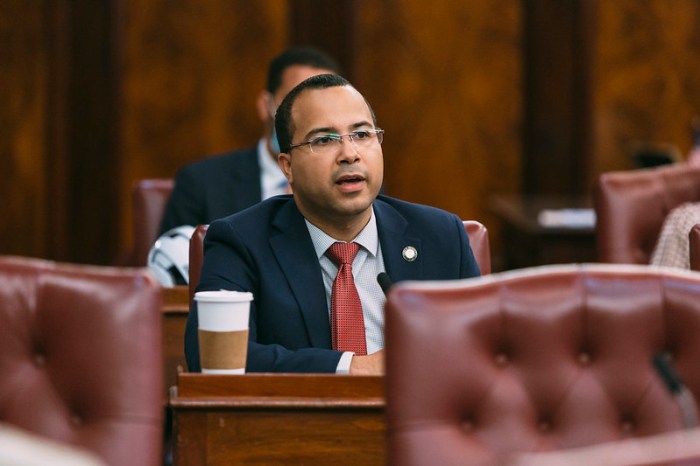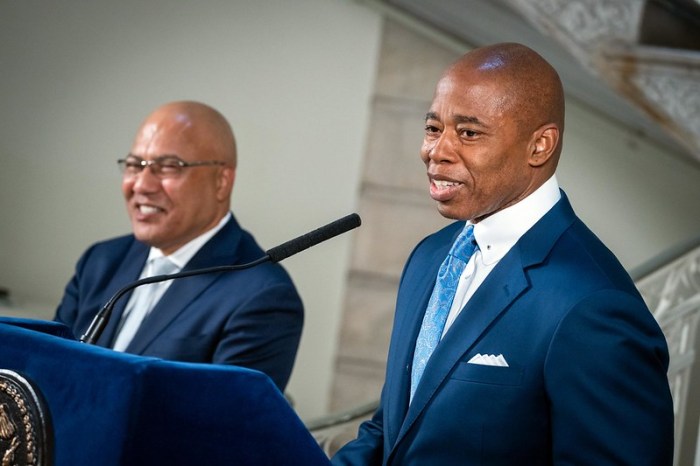State and city Comptrollers Tom DiNapoli and Brad Lander both applauded Mayor Eric Adams Tuesday for his efforts in building over $8 billion in reserves into the city’s Fiscal Year 2023 Adopted Budget, but warned of troubled economic waters ahead for the Big Apple.
The chief state and city fiscal watchdogs cautioned that factors like slowing Wall Street profitability and bonuses, declining personal income tax revenue, the drying up of federal pandemic aid and a possible recession create economic uncertainty for the city over the next few years. Given these uncertainties, DiNapoli applauded Adams’ efforts to set aside billions of dollars in reserves.
“These many challenges and uncertainties place a premium on having funds set aside to bridge a period of fiscal weakness. With over $8 billion in reserves and other funds in its health trust, the city has made progress in buffering against uncertainty and being able to maintain the programs necessary to foster an economy that is still recovering,” the state comptroller said.
“But reserves must be used for their intended purposes and keep pace with spending growth, particularly given potential budget risks. As gaps are closed, better than projected results may allow the city to set aside additional funds for reserves as it did in fiscal year 2022. It should take every opportunity to build its rainy day fund up to levels that are closer to national peers,” he added.
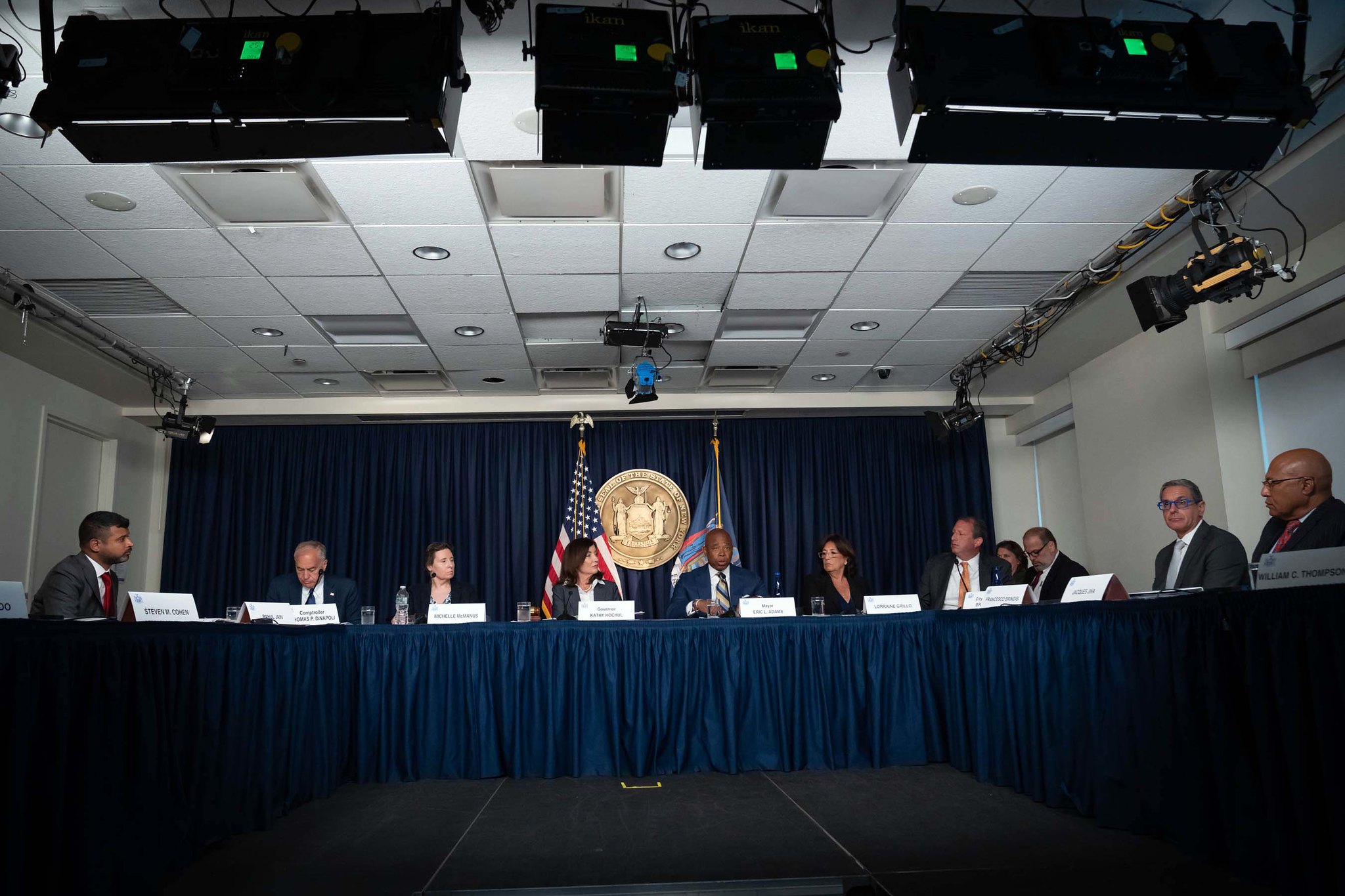
The head numbers crunchers made the remarks during the annual New York City Financial Control Board (FCB) meeting at Governor Kathy Hochul’s Midtown Manhattan office, before determining the city passed financial muster by meeting the five main criteria of the Financial Emergency Act. Joining DiNapoli and Lander at the meeting were Hochul – who presided over the proceedings, Mayor Eric Adams and other state and city officials.
At the same time as the FCB rubber-stamped the city budget, the City Council passed a resolution – sponsored by City Council Speaker Adrienne Adams – to restore $469 billion cut from school budgets this year. The council almost unanimously passed the budget containing these cuts in early June, three weeks ahead of the July 1 deadline.
During his first year in office, Adams put much of his political capital in budget negotiations with the City Council into prioritizing reserves and savings in the city’s fiscal year 2023 spending plan. Adams was able to build the city’s savings, he said, with the help of a budget surplus left by his predecessor Bill de Blasio and an additional $1.5 billion in additional tax revenue due to strong Wall Street activity last year.
“Our planning must recognize that we face uncertainty and I just really want to emphasize that we face uncertainty in the future,” Adams said. “I agree with my friends here today that building and maintaining budget reserves as a buffer against the unexpected is a critical priority. So at adoption, we partnered with the City Council to increase reserves by $2 billion, which is the largest single contribution to reserves in the city’s history.”
On top of the additional revenue, the mayor said he was able to build the city’s future financial cushion by reducing the city’s headcount to just under 304,000, which is 23,000 less positions than the city had this time in 2019.
When it comes to uncertainty on the horizon, DiNapoli said the city is facing over $5.9 million in risks for fiscal year 2026, when federal pandemic dollars are expected to be fully used up and the effect of this year’s pension results are taken into account. Plus, the city has a projected $4 billion budget gap for that year, which could bring the potential 2026 gap to $9.9 billion.
Additionally, DiNapoli said, the city faces risks that are harder to quantify. This includes the potential of a recession, the city’s unemployment rate and the cost of its collective bargaining agreements with municipal employee unions.
According to Lander, the city must put another $800 million into its Revenue Stabilization Fund in order to weather a possible recession.
The city also has to be wary of dwindling federal funding over the next couple of years, Lander said, especially when it comes to programs like the expansion of 3-K that were funded through those one-time allocations. The estimated budget gaps of $869 million, $6.4 billion, $7 billion and $9.5 billion over the next four years respectively means the city must closely watch its spending in order to avoid massive cuts to essential services.
“These are sizable gaps and will require strong fiscal discipline in order to avoid harmful cuts to services, ensuring the city can meet our obligations to our creditors, our workforce, our vendors and to the services expected and needed by our residents,” Lander said.
That’s “the essential work of this board and all the folks around it,” he added.


